2015 | Forum
Searching for Evidence
With 43 films in the main programme and a further 11 Special Screenings, the 2015 Forum was launched. In this interview, section head Christoph Terhechte talks about a remake of Blade Runner, the contemporary use of archive, the cinematic search for evidence and his delight at the Forum's return to the Akademie der Künste.

Sueñan los androides (Androids Dream) by Ion de Sosa
Reinterpretations of classic topics and motifs are a focus of this year's Forum. How did this come about?
The focus emerges as the programme is being created. We gradually build upon the films we select at the start. We only establish the core themes of what's currently preoccupying filmmakers whilst watching the hundreds or even thousands of submitted films. Only then do we start seeking out connections and following the lines we've discovered. Out of this emerge thematic strands like these reversions to or complete reinterpretations of motifs which could be as old as Greek mythology or as relatively new as an unfinished Kafka novel.
What is the most radical reinterpretation?
I find the Blade Runner remake Sueñan los androides (Androids Dream) extremely radical because it completely forgoes any art direction and simply reinterprets an existing location: the town of Benidorm with its tower-blocks by the sea. The director Ion de Sosa became inspired and realised he didn't need to build any sets because Benidorm provides everything. And for anyone with previous knowledge of Philip K Dick's novel 'Do Androids Dream of Electric Sheep?', upon which Blade Runner was also based, this opens up a highly bizarre new perspective. You can also understand it as an experiment in discovering just how far you can reduce the story you want to tell. And out of this minimalism emerges an abundance of riches.
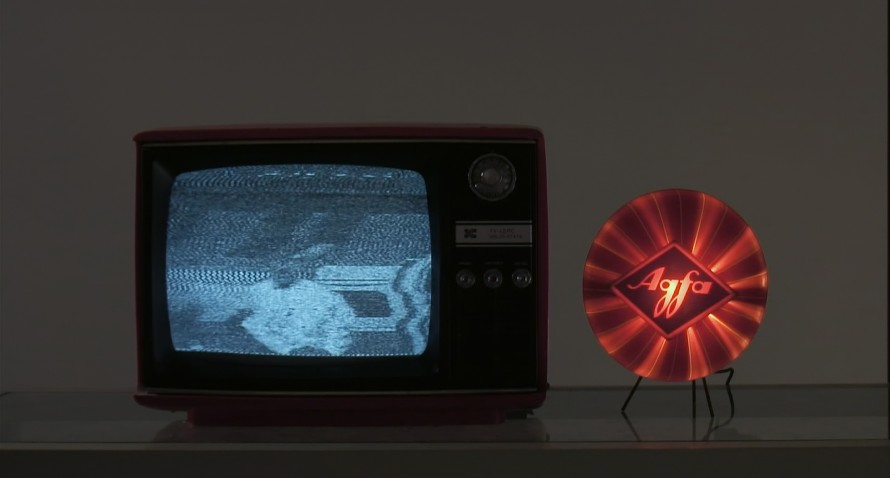
Thamaniat wa ushrun laylan wa bayt min al-sheir (Twenty-Eight Nights and A Poem) by Akram Zaatari
Cinema: A Public Affair by Tatiana Brandrup depicts the Russian film historian Naum Kleiman who has a very specific idea of cinema. Does this concept also apply to the Forum?
His approach to film history is a less technical and film analytical one. His interest is in the audience and that's a way of thinking with which I can easily identify. I'd always subscribe to the idea that a film only comes into being in the mind of the viewer. When 800 people sit in the Delphi, 800 different films are created, albeit with the large amount of overlap which constitutes the communal cinema experience. That's the beauty of a festival: you discover the film anew with the audience. And you speak to the creators about the film you've just seen which isn't necessarily the same film as the one they made. That also helps the filmmakers: they see how diverse the reactions to their films can be.
Archive plays a big role in the 2015 Forum Expanded. Is that also true of the Forum?
Through the Arsenal's Living Archive Project, archives have been an essential aspect of our work with film for years and that obviously has an influence on the Forum. For Thamaniat wa ushrun laylan wa bayt min al-sheir (Twenty-Eight Nights and A Poem) a photographer opened up his studio in the small Lebanese town of Saïda. There, filmmaker Akram Zaatari discovered not only the archived photographic material but also the archived means of production. The photographer had been helping his customers to create self-portraits for years using various analogue and later digital techniques. Akram Zaatari plays with different methods and in doing so creates an extremely rich mixture of formats and approaches and this directly corresponds with the subject of this archive, of the location as an archive.
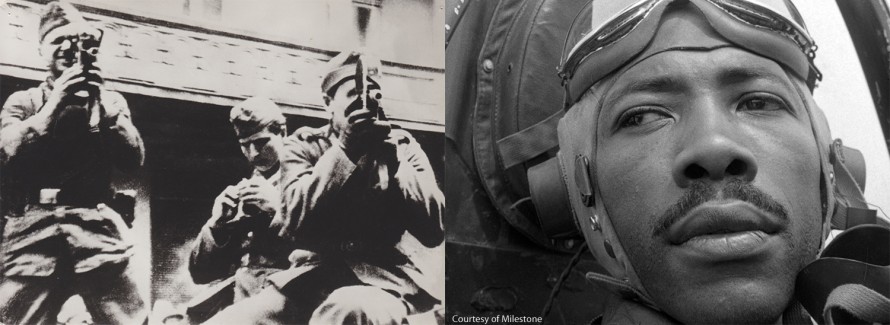
The 81st Blow | Strange Victory
Do the various films take different approaches to documentary material?
Strange Victory from 1948 and The 81st Blow from 1977 are films which, due to their age, are obviously not up to current standards of the approach to documentary: they are rather classical documentaries. Both work a lot with archive material. What makes them interesting is their enduringly topical subject matters. Even though it was made 67 years ago, Strange Victory could be a film about the current situation. It shows racism in the USA. America is celebrating the victory over fascism in Europe but is still far from conquering its own inherent fascism – and you automatically think about everything that has happened recently from Ferguson to New York. The film laments not only racism against black people – for example, after the war black fighter pilots failed to secure jobs in civilian aviation simply because they had the wrong skin colour. The film also laments the anti-Semitism in the USA which also resulted in terrible excesses there. Of course this hatred didn't become state policy in America but it has still not been fully overcome even to this day.
The 81st Blow is a milestone regarding the use of archive material for educational purposes. Film is used here as a witness statement and, mixed with the sound recordings from the Eichmann trial, it becomes an evidence base which rebuts the Holocaust deniers and doubts about the Jewish opposition. In this way a film can vindicate truth.
Today, documentaries take a much more playful approach to documentary material. Are there reasons for this?
Filmmakers have to take into account that viewers have become accustomed to the possibilities of images. When audiences weren't so replete with moving images, documentary pictures could develop a more suggestive power. Today it's possible to handle the material in a much more ironic and subtle way. Filmmakers need to find a different level because viewers are no longer so easily impressed. Faking images is much more widespread nowadays and audiences are consequently more sceptical.
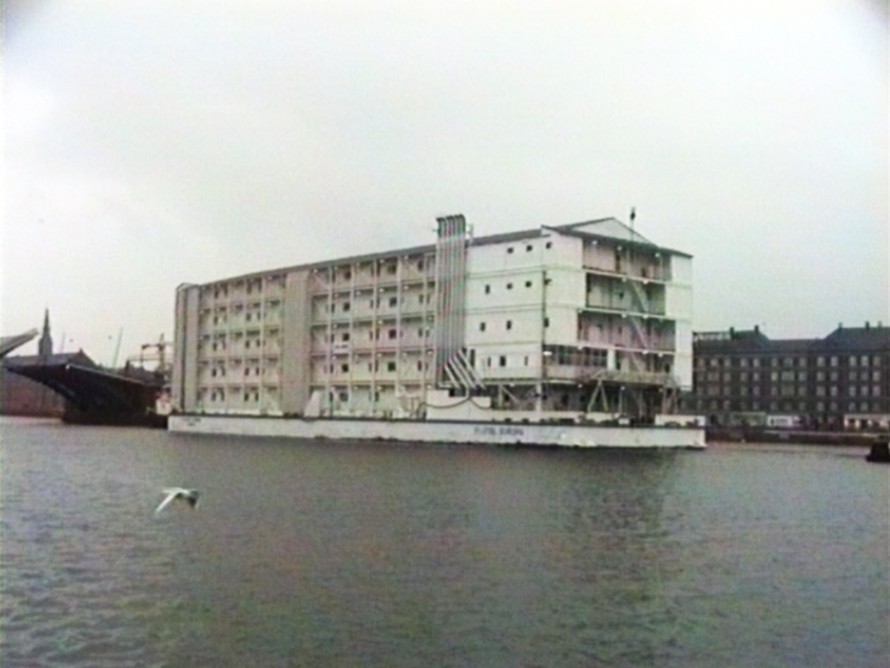
Flotel Europa by Vladimir Tomic
Flotel Europa displays a very personal approach to archive...
Yes, you could describe it as a 'found footage' film. Whether it's really their own archive is doubtful. You're not sure how much fiction is concealed in this story. It is composed of original footage from a refugee ship in Copenhagen harbour where refugees from the former Yugoslavia arrived in the 1990s. They filmed their daily lives and sent information on VHS tapes back to those remaining at home. But the coming-of-age story which is told via these images and the voiceover could equally well be fabricated. That's something each viewer must decide for themselves. That's where I think the excitement of the film originates: the material and commentary have been used in a creative, inventive way even if that means it makes it more of a work of fiction and no longer a true documentary. Which has always been a legitimate practice in pieces created from found footage.
Some films in the programme explicitly seek traces in the visible world and, in doing so, also resort to a type of archive in which the old is preserved in some way. How does this happen for example in Ce gigantesque retournement de la terre (This Gigantic Furrowing of the Ground)?
The search for traces occurs on two levels. In reality and in a historical film - Le six juin à l’aube by Jean Grémillon – which dealt with the location in 1944/45 and with what had, at that time, recently transpired there: the German occupation of Normandy and the American invasion which left behind deep wounds in the landscape. The way filmmaker Claire Angelini compares the present-day location with the historical one, and also uses the sound from Grémillon's film, is complex and a very good example of how documentaries today can take a different approach to archive material. A lot has happened in the area of form. Much more is possible now but it has also simply become a necessity because the way in which we look at images, at archive material, and how we evaluate their power to persuade has changed so much.
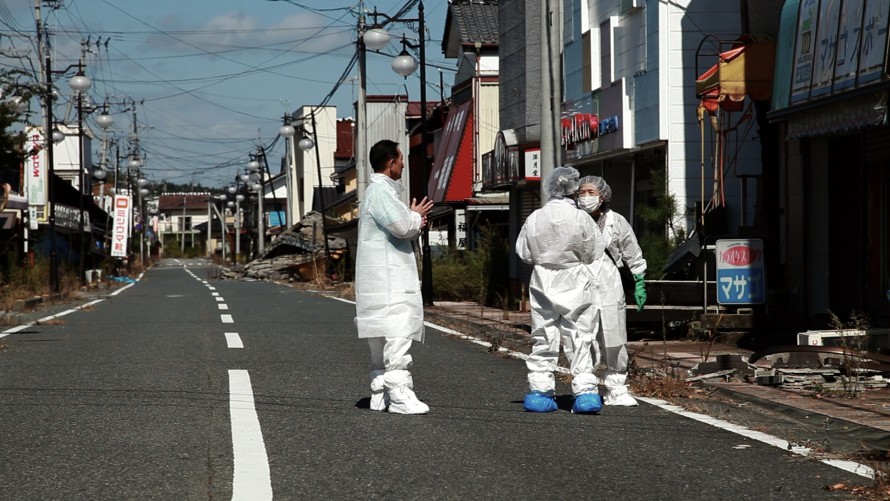
Futaba kara toku hanarete dainibu (Nuclear Nation II) by Atsushi Funahashi
Does Out of the Forest intentionally forego archive footage or are there simply no images available?
The film intentionally eschews it, in the same way Claude Lanzmann did in Shoah. It is an alternative approach which, possibly in response to films like The 81st Blow, says: 'We're going the opposite way. We're not seeking to prove something with images; instead we want to evoke memories and stimulate the imagination, which the viewers have to create for themselves and which we will not dictate to them.
Let's remain with stories about time or in time. With Futaba kara toku hanarete dainibu (Nuclear Nation II) you have the sequel to Nuclear Nation from 2012 in the programme. What has happened during these past three years?
The first part was about a mayor who, after his town was more or less obliterated by the tsunami and the nuclear catastrophe, sought to hold his community together in an emergency shelter. The town had massively benefited from the nuclear industry, almost everyone was employed within it. The mayor tried to make them embrace a new point of view. In the first film this was representative of a very big change in perspective in the whole of Japan. Nuclear Nation II now establishes that, three years later, everything has returned to how it was before. The community has broken up, the mayor has been deposed. The film is the hard-edged and necessary epilogue to the first part, which was rather more rousing and hopeful.
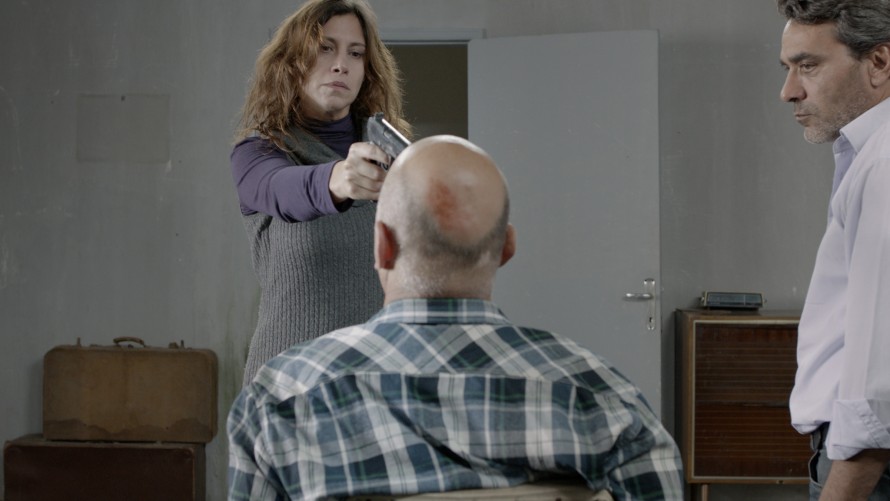
Al-wadi (The Valley) von Ghassan Salhab
Three years ago we spoke about the lack of images, the invisibility of the nuclear radiation threatening everything. Do the consequences of the radiation manifest themselves as images today?
Yes, of course. There's the character of a farmer who, contrary to all instructions, has remained in the disaster zone and continues to rear his animals. You can see the tumours with which these creatures are now riddled. So there are images of that. But the effect of the radiation is, of course, insidious and almost impossible to capture pictorially, so you have to find visual metaphors to describe how uncanny and monstrous this force actually is.
You have a number of films in the programme which, by dint of focusing on a small section of a society, are able to present whole societies in their entirety. For example, Al-wadi (The Valley)...
It's no secret that small stories which symbolically represent a bigger situation can be more powerful than attempts to capture everything in one go. The more bombastic a film tries to be, the less effective it usually is. At the same time it can't be denied that films by directors who consider themselves artists rather than craftspeople are usually made with less money and are therefore obliged to take on such stories. That's just as true for The Valley by Ghassan Salhab as it is for La mujer de barro (The Mud Woman) by Sergio Castro. And also the Turkish film Nefesim kesilene kadar (Until I Lose My Breath). They are small, more or less private stories which either really refer to something bigger only for the viewer or, as in La mujer de barro, openly contain social criticism because the film also addresses working conditions. Or, as in the case of Ghassan Salhab, an apocalyptic vision which is created through really meagre means but is actually very effective.
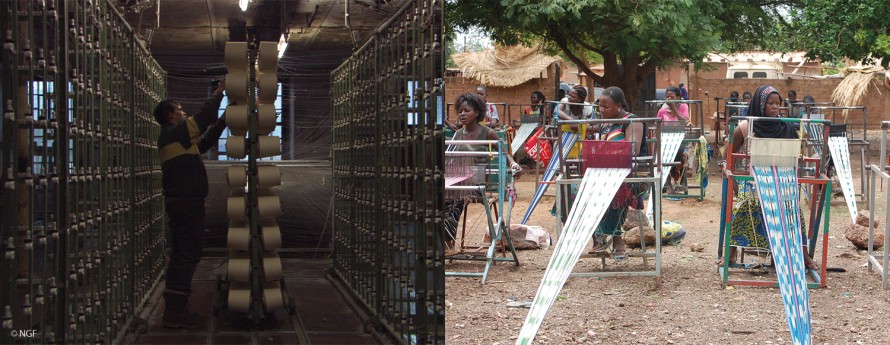
Über die Jahre (Over the Years) | La sirène de Faso Fani (The Siren of Faso Fani)
Like last year, you have many films in the programme which concern themselves with the subject of work. La sirène de Faso Fani (The Siren of Faso Fani) and Über die Jahre (Over the Years), to name just two examples…
La sirène de Faso Fani and Über die Jahre are good examples of the way films in our programme enter into a dialogue with each other. Ten years ago Nikolaus Geyrhalter visited a textile factory in Austria's Waldviertel on the border with the Czech Republic. He first observed – which is comparable to the method used in Il gesto delle mani – which kind of work the people were faced with there and the seemingly ancient machinery. Then the textile factory closed down and he decided to remain with the people he had by then been watching for over ten years as they became unemployed or found new jobs of a very different nature – a highly fascinating long-term observation. La sirène de Faso Fani tells a similar story, but seen in reverse. This film also deals with a closed down textile factory. Michel K Zongo looks at the past and in doing so not only tells the story of Burkino Faso, whose exemplary socialist programme was replaced by an ugly form of neo-liberalism, which this textile factory also fell victim to in 2001. Instead of just concentrating on the collapse of the factory, he depicts the people’s determination to continue with their handicraft and thus to uphold the reputation of this work. During the filming they reunite and decide to form a new model rather like a cooperative. It is also interesting that this very highly regarded Faso Fani textile factory, which was described as being the height of modernity, had just about the same machinery as the factory in Austria which, due to it being outdated, closed down at around the same time. It's really fascinating to see both films in correlation.
Ok, the final question: are you looking forward to your return to the Akademie der Künste?
Oh yes, absolutely. It's a really wonderful location which is excellently suited to bringing together our film programme with the one from Forum Expanded, including the exhibitions. The Akademie der Künste on Hanseatenweg is much more appealing as a place to linger than the rather industrial locations here on Potsdamer Platz.